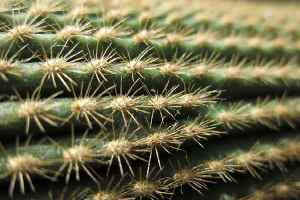 Visiting the desert can be a ton of fun. The vast open spaces, the clear blue skies, and the isolation from other people can all make for a relaxing trip. However, it’s easy to let your guard down in the desert if you’ve grown up in an area that is filled with plant and animal life. If you walked through a forest or a jungle, you would immediately assume that many of the lifeforms you encounter could be dangerous. But in the desert, where life is so sparse, it might be easy to assume that you don’t have as much to worry about from the local flora and fauna.
Visiting the desert can be a ton of fun. The vast open spaces, the clear blue skies, and the isolation from other people can all make for a relaxing trip. However, it’s easy to let your guard down in the desert if you’ve grown up in an area that is filled with plant and animal life. If you walked through a forest or a jungle, you would immediately assume that many of the lifeforms you encounter could be dangerous. But in the desert, where life is so sparse, it might be easy to assume that you don’t have as much to worry about from the local flora and fauna.
You’d be mistaken, especially if you’re visiting a desert in North or South America. Though you’re probably already aware of the dangers associated with snakes and scorpions, most people don’t realize that the humble cactus can really mess you up.
Obviously if you fall into a cactus, you’re in for a bad day. However, those wounds are usually fairly simple to treat. The vast majority of the time your first aid kit and some basic knowledge would be all you need to patch yourself up. If your skin was punctured by a spine, then all you need is some rubbing alcohol and a bandage. If a spine gets embedded in your skin, it can be extracted with a pair of tweezers. However, those thick sharp spines aren’t what you should be worried about. It’s the spines you can’t see that will keep you up at night (literally).
There are several species of cacti that carry what are called glochids. These are very small, barbed spines that are almost impossible to see, and making contact with a cactus can release hundreds, or even thousands of them. Even a slight breeze can release them. And once they get on your skin, it’s pretty much impossible to remove them all. In all likelihood you won’t even know that you have them until your skin starts to itch 1-3 days later.
At that point you’ll start to notice itchy red marks on your skin that are often mistaken for bug bites. Buckle up, because if those lesions are left untreated, they’ll remain itchy for up to 9 months. The longer you wait to treat them, the more those spines will burrow under your skin, so it’s imperative that you treat this condition as soon as possible.
The most common mistake people make when treating a glochid injury, is that they often try to suck them out with their mouth. As you can imagine, this often embeds them in the tongue or throat, which is even harder to treat. When the wound is fresh, you can even spread them to another part of your body or to another person (perhaps whoever thought it was a good idea to visit the desert, am I right?).
The best way to remove them is with some kind of adhesive. In a pinch, applying duct tape to the skin and ripping it off can remove quite a few of them, but there are better options. Oftentimes the glochids are stuck together in clumps, and are thus visible. These can be removed with tweezers. After that you can apply Elmer’s Glue to the skin and wait for it dry before removing it. That will take many of the individual spines, and combined with tweezers, should remove about 95% of the spines. This is considered more effective than any other method.
There’s another method you might want to consider, though it hasn’t been rigorously tested like the method I explained above. Though if you’ve already used the Elmer’s Glue and tweezers trick, it can’t hurt. You can apparently use pumice to exfoliate the skin. The glochids will fall away as the pumice strips the outer most layer of the skin.
So if you’re ever in the desert, you should be a bit more suspicious of all those cacti you see. A few them can turn your trip into an itchy nightmare.
